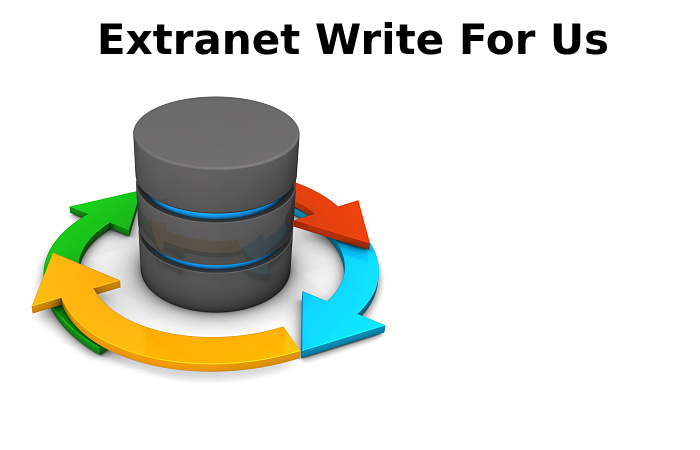Fluid communication lays the foundations for successful collaboration between companies and people outside them. In this, an extranet constitutes a way of providing internal information to a selected circle of people. In this, an extranet includes a way of delivering internal information to a chosen process of people. Whether it about orders from a supplier or production notifications for some customers, it often complicated and ineffective to clarify depending on the details over the phone or by email. What is an extranet, and how does it work? With what objectives can it be implemented?
What is an extranet?
The word extranet results from the combination of the Latin word “extra” (outside) and “net” (network), thus designating a private and controlled network of computers that uses Internet technology to connect a defined group of people together. External users and grant them access to the network. An extranet makes resources available to an authorized circle but not to the general public. Some potential external users are business partners, vendors, and customers. Implementing an extranet facilitates the exchange of information beyond the company’s limits, especially the communication between its employees and external people.
Internet, intranet, extranet: how are they different?
The extranet is a delay of the intranet that uses the same technology as the Internet. If we compare the three concepts in a corporate framework, the differences are better understood:
- Intranet: the intranet is a corporate network that connects various participants to each other and thus allows internal exchange. It is used to being physically located in the company, and the access permissions of each one of the members of the network are regulated with access controls, groups and user roles so that all users do not have access to all sectors. This limitation of access permissions is convenient, for example, to provide certain information only to some departments.
- Extranet: an extranet is a corporate network that communicates to internal and external users through subnets, thus allowing exchange between company employees and people outside of it. In this case, access to the extranet is not tied to a particular place, and external users do not gain access to the entire intranet but are only allowed to enter certain areas. Here, the type of information available to each user is also regulated with access controls, groups and roles so that, for example, suppliers and clients have different permissions.
- Internet: the Internet is a global and open set of computer networks. It is not a homogeneous network but comprises many, often very different networks.
Possible uses of an extranet in the company
With the implementation of an extranet in a private company, in an organization, in a university or in an association, a comprehensive information network is built that can be integrated into corporate processes in various ways:
Data traffic – An extranet facilitates electronic data interchange, often referred to as EDI for Electronic Data Interchange, on documents (order forms, delivery notes) sent by trading partners. This allows data to be shared beyond company boundaries and processed without requiring manual editing. This way, the data can be sent without relying on merchandise management systems.
Data management: In such a network, data can be quickly updated and made available to authorized users, ensuring currency and transparency of data processing.
Cooperation: an extranet facilitates the everyday use of software applications and collaboration with other companie
Communication of information: This way, news of interest to specific users can be announced.
Knowledge Management: Partners can share the use of training programs or develop typical applications.
Companies can also integrate other functions to facilitate exchange with the outside world, such as a search engine, a personnel directory or a messaging service. However, interactive functions such as surveys or voting could also be considered.
How does the extranet work?
From a technical point of view, the extranet and the Internet share configuration: communication takes place on both networks thanks to a set of around 500 network protocols that determine based on which rules and format the contact occurs. The Internet Protocol, IP, and Transmission Control Protocol, or TCP, are the foundation of data exchange.
Companies have several ways to implement an extranet: it could be a fully self-contained network only accessible via a separate phone line or be connected to the Internet through protection mechanisms.
Security and protection on the extranet
When sensitive data is exchanged, it is essential to take precautionary measures, not only ncerningconcerning third parties that may illegally access internal information but also to possible security leaks within the same company. To protect the extranet and your private data from access by unauthorized persons, two preventive measures usually used above all:
- Firewall – A firewall prevents unauthorized access from outside the extranet and the company.
- Passwords – Keys prevent unauthorized access (also within the company) to data stored on the server.
The adequate protection of the extranet goes through an external firewall installed between different computer systems, which gives it the name of a network or hardware firewall. Because it doesn’t run on the same method it’s supposed to protect, like a personal firewall, more challenging to manipulate.
What is VPN?
Virtual private networks or VPNs also guarantee high protection. A VPN (Virtual Private Network) a remote communication network in which the connection made through a virtual IP tunnel that allows network members to access the company’s intranet. To safeguard the integrity of the data when using open relationships, the information encrypted (tunnelled) so it invisible to other users of the public network.
How to create an extranet
A difference usually made between two basic ways of creating an extranet and integrating it into corporate communication, and in both cases, the portals:
- Corporate portals – This portal brings all the applications together in a single user interface. This is a great advantage, especially when many different extranet applications are integrated. It prevents the user from switching between various operating modes and authenticating himself several times, as would happen if he had to use several other applications.
- Portals for processes: these types of outlets oriented to the most common business processes designed to carry out orders, cost calculations, etc., and can, but should not integrate into the corporate portal (they can also use as a stand-alone application).
Another alternative to creating an extranet to use a content management system, although the range of functions covered by the software varies depending on the CMS that used, so if some essential functions missing, they would have to add with extensions. . Still, it’s worth knowing that implementing and maintaining overly complex systems requires some technical expertise.
What are the advantages of implementing an extranet?
Implementing an extranet brings many advantages for companies, including facilitating the exchange of data between employees and outsiders, whether they work inside or outside the company. In addition, since an extranet allows the exchange of large amounts of data at high speed, many processes can optimized. The reduction of the work involved in manually executed applications is usually accompanied by increased productivity and cost savings. Informing about the status of an order, for example, no longer necessarily has to done by email individually. Each customer: can access this information with his extranet access data, and since no extra software needed, more EDI costs saved. Since fewer processes executed manually, potential sources of error also reduced.
As regards the timeliness of the data, being able to easily edit the information in the databases and being accessible on the network for users gives excellent transparency to the workflow, which not only facilitates communication but also strengthens trust on both sides.
By integrating the relevant applications, an extranet can also take on the role of groupware and enable cooperation with trading partners. This allows access to shared documentation such as address books, the appointment calendar or task lists. Furthermore, the extranet also offers an excellent opportunity to manage common knowledge, such as training that may be interesting for employees of various partners.
The drawbacks of an extranet
An extranet also has negative aspects, such as the costs of acquiring the software, although they do not end here. The expenses linked to the network installation have added to the costs derived from its maintenance (software updates, backup copies, troubleshooting). In addition, for an extranet to fulfil its purpose, it must kept in good condition. This activity carried out either by company employees or by an external service.
Employees will also have to learn to use these systems, which are often complex, and during this learning process, high opportunity costs can generate, which means that while they are training, they do not have time to dedicate to their work tasks. Primarily when many employees taught simultaneously, for example, in extranet integration, this can lead to reduced revenue.

Likewise, You can submit your articles at contact@businessinsiderblogs.com
How to Submit Your ExtranetArticles Extranet Write For Us?
That is to say, To submit your article at www.businessinsiderblogs.com, mail us at contact@businessinsiderblogs.com.
Why Write for Business Insider Blogs– Extranet Write For Us
ExtranetWrite For Us
That is to say, here at Business Insider Blogs, we publish well-researched, informative, and unique articles. In addition, we also cover reports related to the following:
intranet
DMZ
virtual private network
computer network
Internet
Internet protocol suite.
local area networks
wide area networks
extranet
private network
Internet networking
address space
IP addresses
regional or local Internet registries
IPv4
IPv6
Guidelines of the Article – Extranet Write For Us

Related Pages
Human Resources Write For Us
Industry Write For Us
Influencer Marketing Write For Us
Infographics Write For Us
Investment Write For Us
Lan Write For Us
Law Write For Us
Lead Generation Write For Us
Magento Write For Us
Marketing Automation Write For Us
Technology Write For Us
Link Building Write For Us
Web Designing Write For Us
Digital Marketing Write For Us
Social Media Marketing Write For Us
Finance Write For Us
Website Designing Write For Us
Seo Write For Us
Jewelry Write For Us
Video Marketing Write For Us
Tether Write For Us
Affinity Marketing Write For Us
Air Conditioner Write For Us
Apache Spark Write For Us
Artificial Intelligence Write For Us
[Blockchain Write For Us]
[Business Blog Write For Us]
[Business Finance Write For Us]
[Business Growth Write For Us]
Business-Sites Write For Us
[Business Tips Write For Us]
Chat Rooms Write For Us
Content Marketing Write For Us
Cryptocurrency Write For Us
Customer Support Services Write For Us
Devops Write For Us
Direct Marketing Write For Us
Doge Write For Us
Drip Marketing Write For Us
Entrepreneur Write For Us

